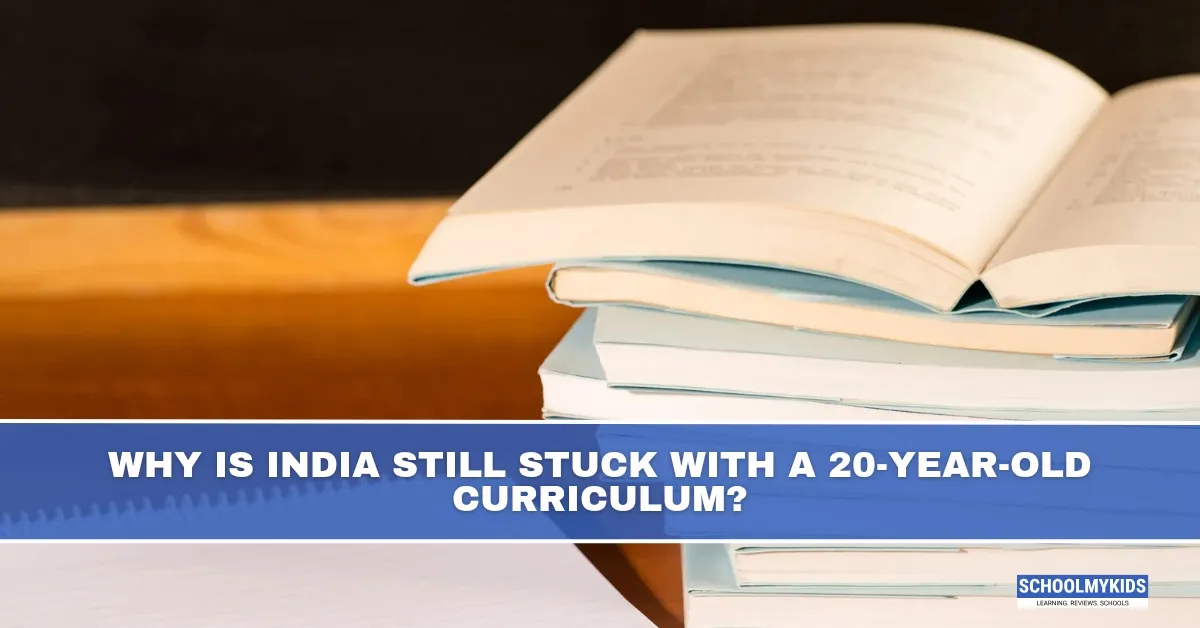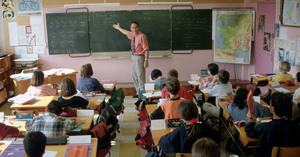Introduction
Education is the backbone of any nation’s progress, yet India’s school curriculum has largely remained unchanged for nearly two decades. Despite technological breakthroughs, shifting global job markets, and evolving social needs, millions of students in India are still being taught with a framework designed for the early 2000s. The question that arises is simple: Why has India’s curriculum failed to keep pace with the times?
How Old Is India’s Curriculum?
India’s national curriculum is largely shaped by the National Curriculum Framework (NCF) 2005, prepared by the National Council of Educational Research and Training (NCERT). While the NCF 2023 was recently introduced, its complete implementation is still in process, meaning most schools continue to follow 20-year-old textbooks and teaching methods.
The original intent of NCF 2005 was progressive for its time—promoting activity-based learning and child-centered education. However, in a rapidly changing world of AI, robotics, climate change, and digital economies, what worked in 2005 is no longer enough.
Why Has the Curriculum Not Changed?
1. Bureaucratic Delays and Policy Gaps
Educational policy in India involves multiple stakeholders—the central government, state governments, boards, teachers, and schools. Even after announcing reforms, the approval, printing, training, and deployment process takes years. Many states delay adopting new textbooks due to budget constraints or political differences.
2. Uniformity vs. Regional Diversity
India has 28 states and 8 union territories, each with unique languages and cultural contexts. Creating one unified curriculum that satisfies everyone often results in slower updates and compromises on innovation.
3. Teacher Training Challenges
Even if textbooks are updated, teachers need to be retrained to handle new-age subjects like AI, machine learning, sustainability, or mental health education. India faces a shortage of adequately trained teachers, especially in rural areas, causing reluctance to shift to modern syllabi.
4. Examination-Centric Approach
The Indian education system still heavily revolves around rote learning and standardized examinations like CBSE board exams, NEET, and JEE. Updating curricula without changing assessment styles creates a mismatch, so authorities often avoid frequent updates to prevent systemic disruption.
5. Budgetary and Infrastructure Limitations
Modernizing curriculum requires smart classrooms, digital tools, laboratories, and teacher workshops, which many schools—especially government ones—cannot afford.
6. Resistance to Change
Both parents and schools often hesitate to embrace drastic changes, fearing additional academic pressure on students or uncertainty about job-oriented outcomes.
Impact of an Outdated Curriculum
- Skill Gap: Students graduate with theoretical knowledge but lack practical, industry-ready skills like coding, digital marketing, robotics, or entrepreneurship.
- Global Competitiveness: Indian students often lag behind peers from countries with modern curricula focusing on creativity and innovation (e.g., Finland, Singapore).
- Mental Stress: An outdated, exam-heavy curriculum increases memorization pressure instead of fostering problem-solving and critical thinking.
- Disconnect with Modern Challenges: Topics like climate change, mental health, financial literacy, AI ethics, and start-up culture are either missing or poorly represented.
Is Change Finally Coming?
The National Education Policy (NEP) 2020 and NCF 2023 promise a much-needed overhaul. The reforms aim to:
- Introduce skill-based and multidisciplinary education.
- Focus on coding, AI, environmental awareness, and vocational skills from an early age.
- Replace rote-based assessment with competency-based evaluation.
- Allow states and schools more flexibility in subject choices.
However, these reforms are still in their initial phases and will require years of coordinated efforts to become fully functional nationwide.
Conclusion
India’s 20-year-old curriculum is not just a reflection of bureaucratic delay but also a systemic challenge involving training, funding, and mindset shifts. While upcoming reforms promise transformation, the pace of change must accelerate to meet global standards and prepare students for future economies and societal challenges.
Until then, India risks continuing the cycle of outdated education producing underprepared graduates, leaving a gap between potential and performance in an ever-evolving world.








Be the first one to comment on this story.